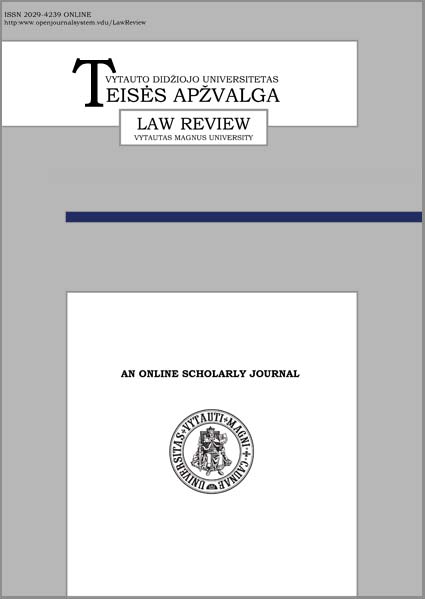Kibernetinės grėsmės ir globali verslo aplinka
Cyber Threats and Global Business Environment
Author(s): Taras TsymbrivskyySubject(s): Law, Constitution, Jurisprudence, Supranational / Global Economy, Security and defense, ICT Information and Communications Technologies
Published by: Vytauto Didžiojo Universitetas
Keywords: Anonymity; Accountability; Conduct attribution; Globalization; Digital environment; Internet; Cyber domain; Cyber security strategy; Hybrid threats; Jurisdiction; Cyber attacks; Cyber operations;
Summary/Abstract: The paper deals with the issue of cyber threats within the realm of global business environment, approached through the multidisciplinary prism: law (national and international law), politics, economics, philosophy. Article’s structure is divided into 4 parts. Introduction submits facts in order to demonstrate the authenticity of cyber threats and especially their largescale damage suffered by global business entities. Current vulnerabilities of cyber domain are a consequence of its decentralized architecture and shortage of law regulations. In the second part “Hybrid threats” brief notice is given of concept’s essence, its interpretation with due regard to cyber threat as a form of hybrid threat. Specifically, the cyber attacks represent a type of hybrid threats, endangering the performance of states fundamental functions. Launching cyber attacks against critical infrastructure of states could give rise to the invocation of unilateral or collective self-defense, in line with the international law. Current applicability of contemporary international law to the cyber domain substantially diminishes the chances of new legal regime emergence.The third part “Critical national infrastructure and legal framework” focuses on defining the notion of critical national infrastructure and respectively its disposure to cyber threats. Notwithstanding the fact that the notion of “critical national infrastructure” does not enjoy a uniform understanding, it is subject to the states determination by means of adoption national legislation. Adversaries employ a number of sophisticated types of operations in the cyber space which presuppose distinct legal regulation and different resilience mechanisms. Resort to cyber attack, being one the gravest cyber threats, might even trigger the inherent right of states to self-defense. Nowadays the use of force could not be rendered to its classical but yet rather restrictive interpretation, namely referring just to the kinetic means. Cyber attacks exemplify a brand new type of use of force, employed by the adversaries in the international relations. Rapid developments in the field of digital environment substantially leave behind the existing legal regulations. Cyber threats are addressed in terms of cyber security measures undertaken on universal (UN), regional (EU, NATO) and national level. Bolstering cyber security should include artificial intelligence technologies.Deficiency of one fits all approach towards enhancing cyber security requires seeking for the alternatives. Employment of an artificial intelligence within the cyber domain is worth considering among many options. Obvious advantages of artificial intelligence systems are usually followed by a number of risks. Undisputed benefits provided by the utilization of artificial intelligence in the field of cyber security should be assessed though the risks. The latter predominantly relates to the caveat against artificial intelligence transforming into a weapon possessing supernatural features. Promising future of artificial intelligence (managing complex systems combined with multitasking; likewise its opposite application with the aim of compromising other states), however not yet discovered to the full extent, is hard to resist. Hence, paving way for a future arms race between states. Key developments in the area of cyber security will be apparently influenced by the proliferation and subsequent sophistication of artificial intelligence systems.Conclusions outline key findings of the research. Capacities of cyber threats have not been exhaustively disclosed by the adversaries and hence such an obscurity is even more dangerous than ever.
Journal: Teisės apžvalga
- Issue Year: 2017
- Issue No: 2(16)
- Page Range: 17-33
- Page Count: 17
- Language: English

